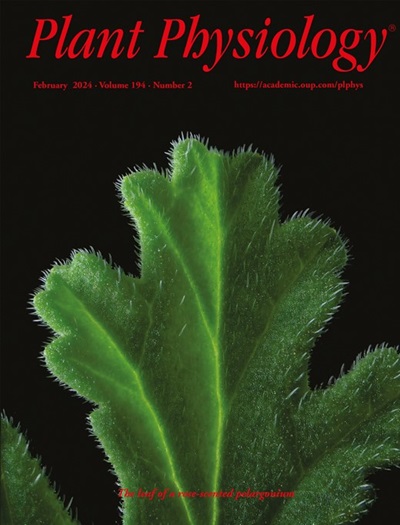Live-cell imaging of a plant virus replicase during infection using a genetically encoded, antibody-based probe
IF 6.5
1区 生物学
Q1 PLANT SCIENCES
引用次数: 0
Abstract
Replication of plant positive-strand RNA viruses occurs in association with intracellular membranes. To date, no versatile technology has been developed to directly label and visualize an active replicase in live plant cells because, in general, replicase function is not retained when it is fused to a protein for fluorescence imaging. We developed a technique to label and image a plant virus replicase during infection using the transiently expressed human influenza hemagglutinin (HA) frankenbody (FB), an antibody fragment that binds the HA epitope. The function of FB was demonstrated by visualizing the targeting of mCherry-fused FB (FB-mCherry) to an HA-tagged and GFP-fused endoplasmic reticulum (ER) marker protein in its native location. The combination of a two-component inducible system with the FB probe enabled FB-mCherry to label an HA epitope-tagged, functional replicase of Plantago asiatica mosaic virus (PlAMV) during its infection in Nicotiana benthamiana cells without affecting virus replication efficiency. The HA-tagged PlAMV replicase forms punctate structures associated with the ER and plasmodesmata and is localized in the vicinity of dsRNA, a hallmark of a viral replication complex. This application of epitope tag-binding intracellular probes for live subcellular imaging in plant cells offers insights into the localization dynamics of an active plant virus replicase during infection and the potential to co-localize host factors with the active replicase in situ.植物病毒复制酶在感染期间的活细胞成像使用基因编码,基于抗体的探针
植物正链RNA病毒的复制与胞内膜有关。到目前为止,还没有开发出一种通用的技术来直接标记和可视化活植物细胞中的活性复制酶,因为一般来说,当复制酶与蛋白质融合用于荧光成像时,复制酶的功能不会保留。我们开发了一种技术,利用瞬时表达的人流感血凝素(HA)弗兰肯体(FB)在感染期间标记和成像植物病毒复制酶,这是一种结合HA表位的抗体片段。通过可视化mcherry融合FB (FB- mcherry)靶向ha标记和gfp融合的内质网(ER)标记蛋白,证实了FB的功能。双组分诱导系统与FB探针的结合,使FB- mcherry能够在车前草花叶病毒(PlAMV)感染烟叶细胞期间标记HA表位标记的功能性复制酶,而不影响病毒的复制效率。ha标记的PlAMV复制酶形成与内质网和胞间连丝相关的点状结构,并定位于dsRNA附近,这是病毒复制复合体的标志。应用表位标签结合细胞内探针在植物细胞中进行活亚细胞成像,可以深入了解感染过程中活性植物病毒复制酶的定位动力学,以及与活性复制酶在原位共定位宿主因子的潜力。
本文章由计算机程序翻译,如有差异,请以英文原文为准。
求助全文
约1分钟内获得全文
求助全文
来源期刊

Plant Physiology
生物-植物科学
CiteScore
12.20
自引率
5.40%
发文量
535
审稿时长
2.3 months
期刊介绍:
Plant Physiology® is a distinguished and highly respected journal with a rich history dating back to its establishment in 1926. It stands as a leading international publication in the field of plant biology, covering a comprehensive range of topics from the molecular and structural aspects of plant life to systems biology and ecophysiology. Recognized as the most highly cited journal in plant sciences, Plant Physiology® is a testament to its commitment to excellence and the dissemination of groundbreaking research.
As the official publication of the American Society of Plant Biologists, Plant Physiology® upholds rigorous peer-review standards, ensuring that the scientific community receives the highest quality research. The journal releases 12 issues annually, providing a steady stream of new findings and insights to its readership.
 求助内容:
求助内容: 应助结果提醒方式:
应助结果提醒方式:


